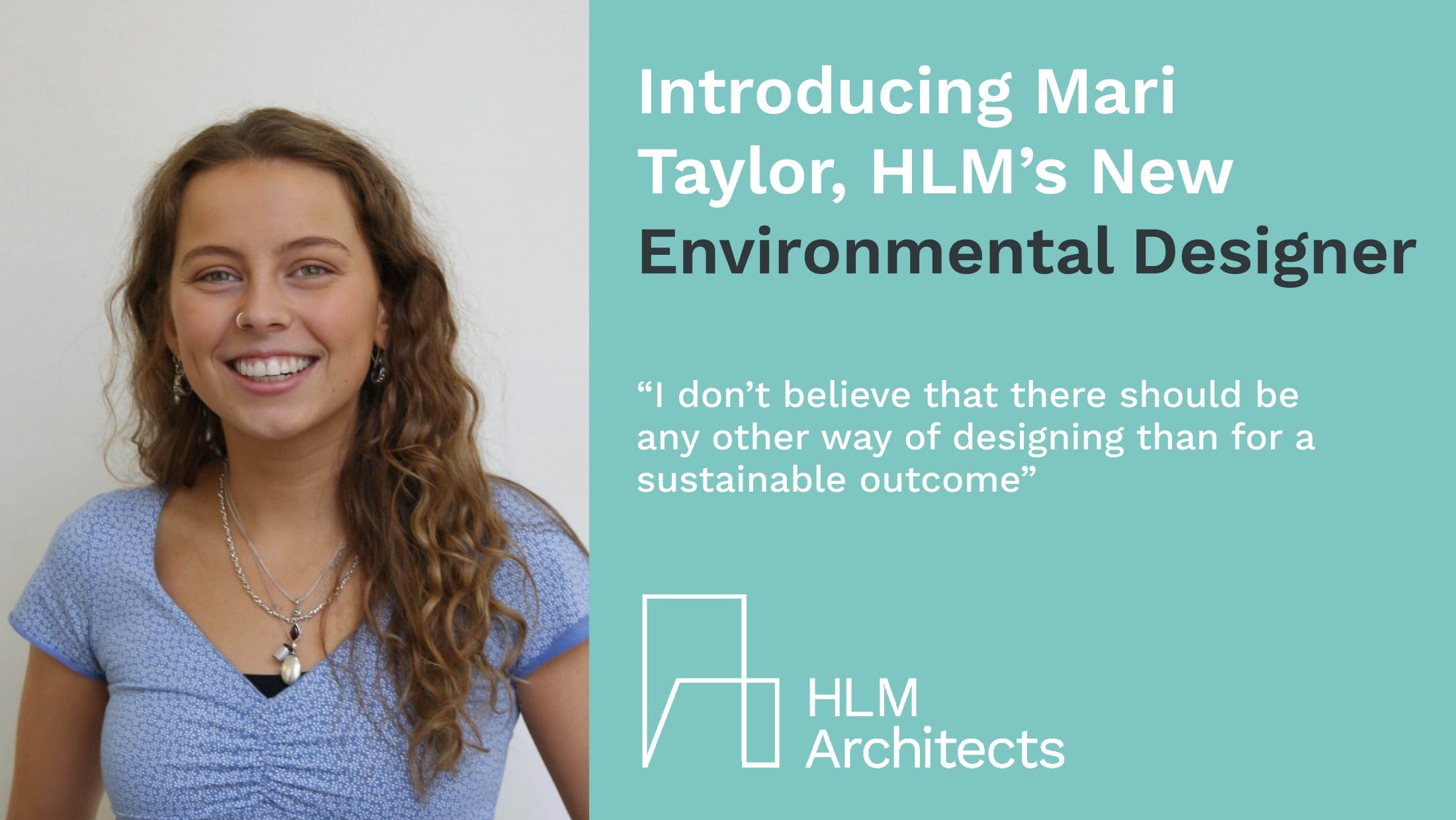
Towards the end of 2021, HLM welcomed their new Environmental Designer, Mari Taylor, to the team. With sustainability at the top of our design agenda, Mari’s appointment supports HLM’s ambitions to reach the RIBA 2030 Sustainability Outcomes by 2025 across all our projects. Mari shares her journey so far, and her ambitions for the future of design.
“We need to ensure we are optimising projects’ environmental potential, and designing for deconstruction and the reuse of materials. My ambition is to push forwards with these objectives among others, with a focus on increasing the use of natural and waste products in delivering projects that enhance the surrounding area.”
I did my undergraduate degree in interior architecture, as I was interested in sustainably redeveloping older buildings. Following this, I realised that I wanted to further my knowledge, and develop a more holistic understanding of architecture as a whole – how different design decisions can have direct impact on a project’s sustainability credentials. When the pandemic hit, I saw this as a prime opportunity to undertake my Masters in Sustainable Architecture at Sheffield University, and align my career development with my values of working with the environment.
The Masters taught me that there is so much more to a building than I realised – more than token gestures of adding plants, or solar panels; there’s the orientation, construction materials, water management, green roof possibilities, and much more to consider – all of which enhance the effects of developments on both the end users and the environment. It is the detail of all these different elements – and more – that I want to dig into, and incorporate as much as possible in the projects HLM are delivering. Computer modelling featured heavily in the course, and this is something that I will be taking forward; exploring how we can best integrate different software, to increase our ability to design both holistically and sustainably.
I don’t believe that there should be any other way of designing other than for a sustainable outcome. I was drawn to HLM as a practice because of their leading stance as architects in Sheffield, their strong sustainability agenda, and acknowledgement that we must adopt sustainable practices as much as possible. I’m excited to have joined a progressive business, where I can be part of influencing changes in the approach to upcoming builds – not just in Sheffield, but across all studios in the UK. My role will be to interject at the beginning of projects, setting out sustainability briefs to lead the design teams, and ensure certain steps are taken from the very beginning of projects, including analysis of sites and suggestions on form. Integrating a clear sustainability agenda from the outset is key in developing projects that are light on the ground, sitting within and complimenting a site, rather than having a detrimental impact.
HLM are involved in many of the new builds that have impact in Sheffield area, and I believe this is where the power to change the direction of landscape design comes from. We need to ensure we are optimising projects’ environmental potential, and designing for deconstruction and the reuse of materials. My ambition is to push forwards with these objectives among others, with a focus on increasing the use of natural and waste products in delivering projects that enhance the surrounding area.


